ChavrutAI: A New Way to Study Talmud
The ChavrutAI website has reached a mature stage and is starting to gain real traction!
I'm excited to share what makes this Talmud reader different and where we're headed next.1
Outline
What Makes ChavrutAI Different
Current Features
Screenshots of current
Main page, tractates outline
Tractate outline (tractate Shabbat)
Page and section (Tractate Shabbat 31a, section 6)
“Suggested pages”
Chapter Outline (outline of Sanhedrin 10 - ‘Perek Chelek’)
Labelling Names and Technical Terms (Beta)
AI Chatbot (Beta)
What's Coming Next
Your Input Matters
What Makes ChavrutAI Different
ChavrutAI is essentially a reification of my ideas on an improved user experience for Talmud study. While it builds upon Sefaria and uses their text, it's deliberately opinionated — designed around my preferences for terminology and interface design that I've also extensively developed on this blog.
This isn't just another Talmud reader; it's the interface I wish I'd always had.
Current Features
The major value proposition right now is clause-by-clause text splitting. Currently, this works by splitting on punctuation, though long-term I plan to use LLM technology to more systematically segment the text — especially the English — and align it precisely with the Hebrew within each section.
Beyond text splitting, I've added several "quality of life" features that together create a very different reading and studying experience compared to other Talmud readers:
Content outlines — including the newly integrated Outline of Sanhedrin 10 (Perek Chelek), with more chapters on the way
Mapping features for better navigation
Curated suggested pages for discovering relevant content
Screenshots of current
(All screenshots are of the website in tablet view.)
Tractate outline (tractate Shabbat):
Page and section (Tractate Shabbat 31a, section 6):
Reading Settings (“Preferences”)
“Suggested pages”
https://chavrutai.com/suggested-pages
Chapter Outline (outline of Sanhedrin 10 - ‘Perek Chelek’)
https://chavrutai.com/outline/sanhedrin/10:2
Labelling Names and Technical Terms (Beta)
After toggling on “Term Highlighting” in “Preferences” (Sanhedrin 90b):3
AI Chatbot (Beta)
In a separate prototype (Kiddushin 72a):4
Chatbot bubble closed, arrow highlighting:
Chatbot bubble open, no text entered yet:
Chatbot bubble open, learner asked to summarize the section:
Learner asking another suggested question (for “Hebrew terms”):
What's Coming Next
Additional features listed in our GitHub issues tracker.
Your Input Matters
I'd love to hear what you think I should prioritize next — here’s a poll where you can vote on what you think should be prioritized:
More broadly, I welcome any feedback or suggestions you might have (you can find my email on the "About me" page).
Additional links
Changelog tracking all updates and improvements
The goal is to make Talmud study more accessible and engaging through thoughtful design. ChavrutAI represents a vision of how traditional texts can be presented in the digital age — and we're just getting started.
Compare my previous overview of the ChavrutAI website, a month ago: “ChavrutAI Talmud Web App Launch: Review and Comparison with Similar Platforms“ (August 05, 2025).
See my discussion here (Aug 24, 2025): “Appendix 3 - Talmudic Indexes: Existing Talmudic Indexes, and Index vs. Outline, and Towards an Outline of Select Chapters and Sugyot“.
See my discussion here: “Mapping the Talmud: Scalable Natural Language Processing (NLP) for Named Entities, Topics, and Tags in the Talmudic Corpus“ (May 04, 2025). I use lists (“gazetteers“) that I describe there, found in txt files at this Github repo of mine.
See my discussion here: “Developing the ChavrutAI Chatbot, an AI Talmud Study Partner“ (Aug 14, 2025).


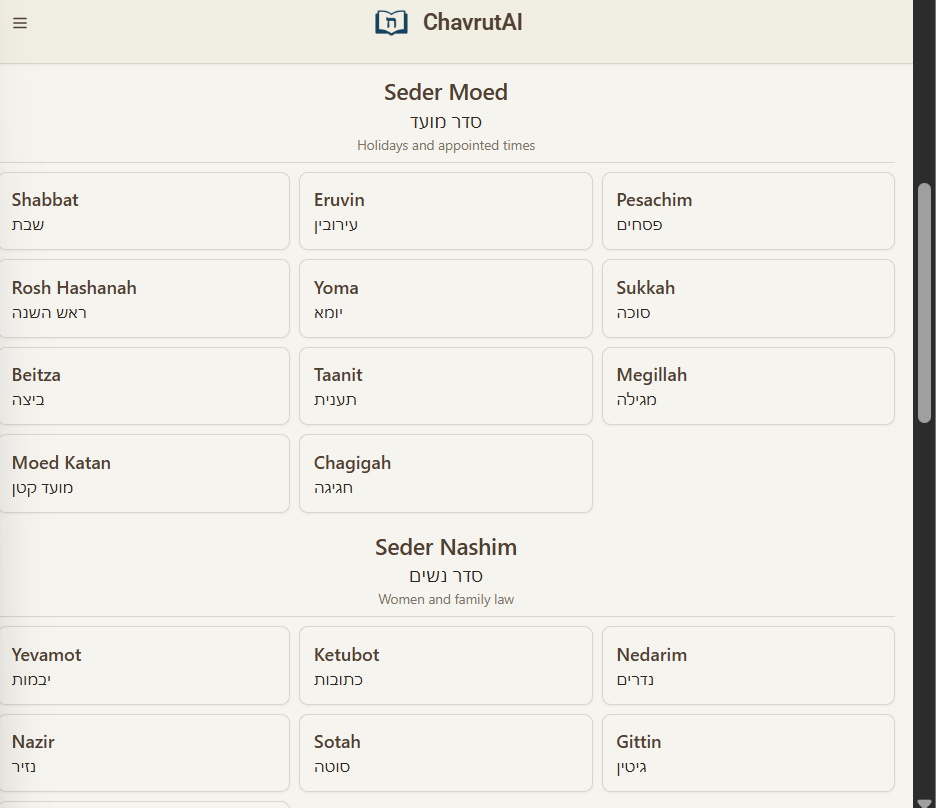

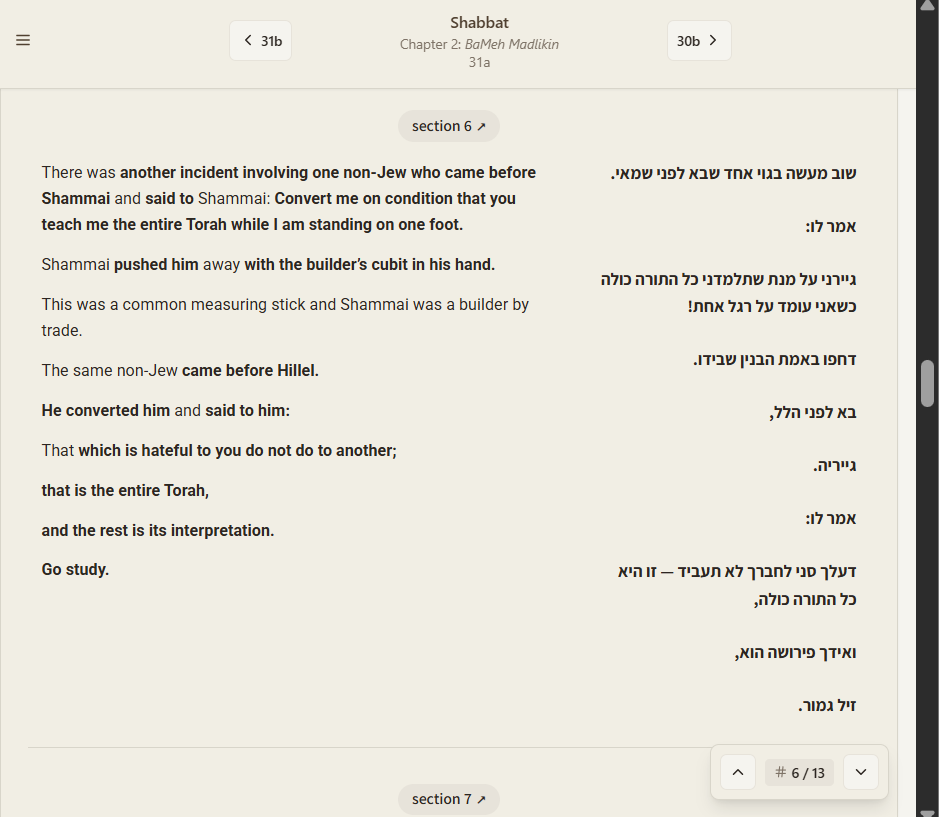
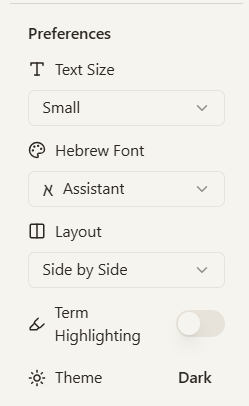
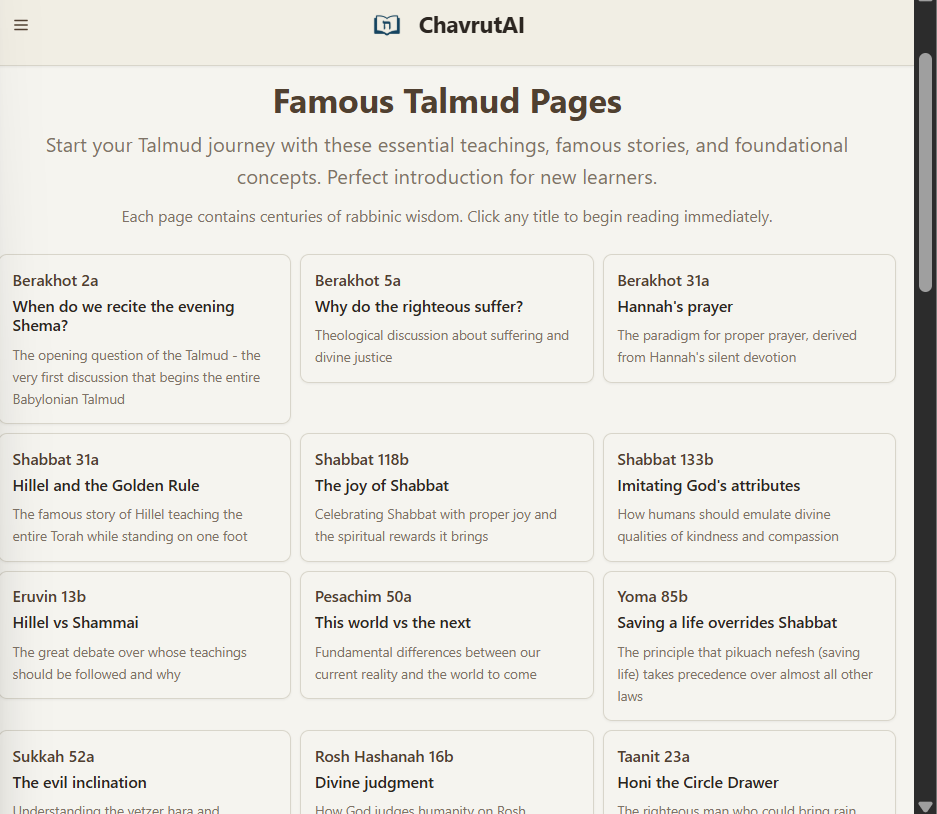
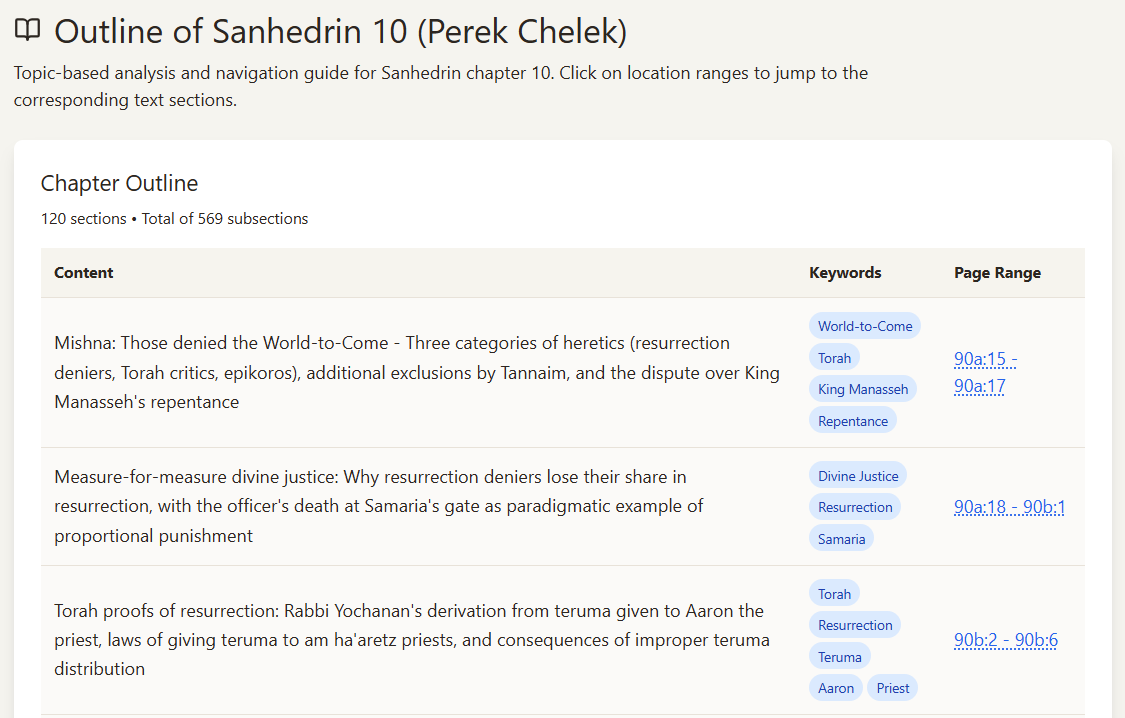
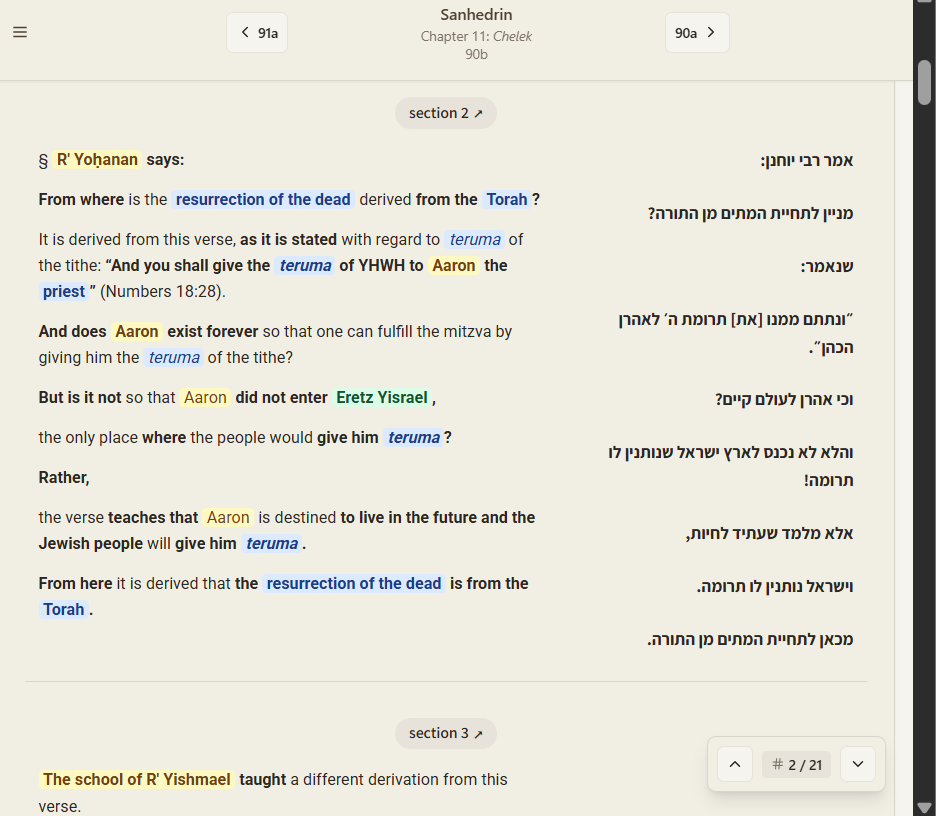
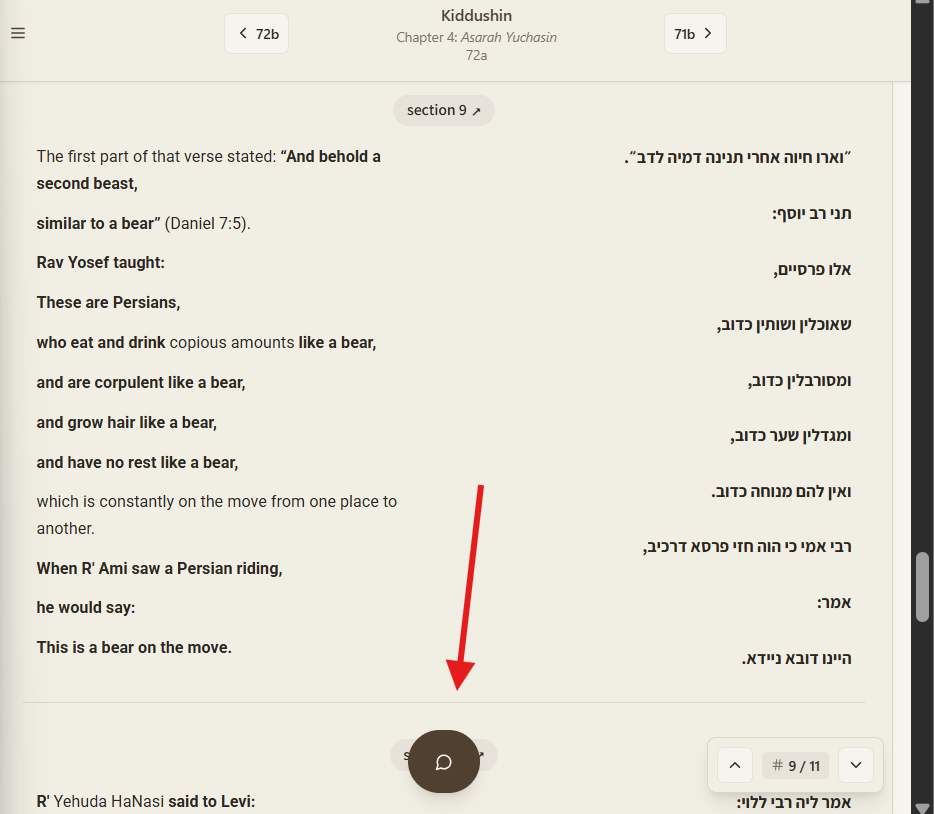


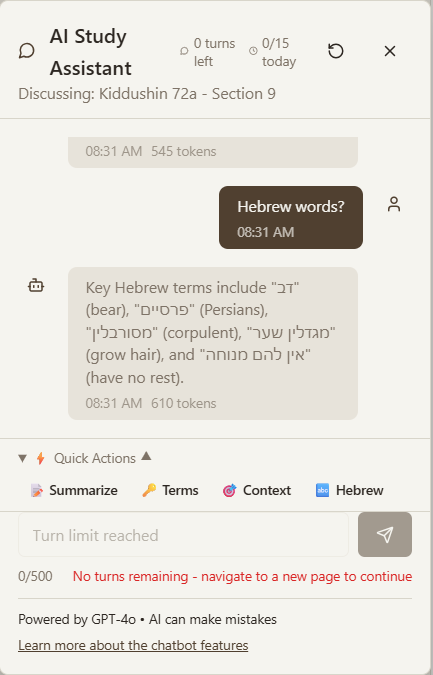
I am currently on Menakhot בעיון.
Well done work but if I need other commentaries I am automatically sent to Sefaria.
So far , it looks very helpful to daf users.
If you put this together, I am really impressed. I am too old to have the skills to do this. (In our home, we would call me a digital immigrant, as opposed to my children who are digital natives)